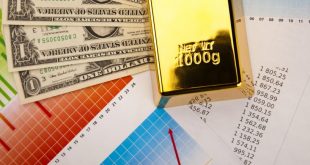US equities had a phenomenal first half of the year, with the S&P up over 17%, thanks to a strong US economy, declining inflation, and a boom in mega-cap growth businesses propelled by artificial intelligence.
Investors are watching to see if the second-quarter earnings season will serve as the next impetus to propel equities even higher or, on the other hand, send them plummeting down to earth. Last week, big banks including JPMorgan, Wells Fargo, and Citigroup began reporting results. Market players looked to the early reporters to provide answers to two important questions: what is the most recent effect of higher rates and tighter policy on the financial system? And what will banks reveal about consumer strength?
These reports, taken together, allayed any significant worries on these two fronts. The largest banks’ deposit levels have remained stable, betas—the price relative to market rates—have not increased as much as anticipated, and non-interest income has improved since early June. Credit quality for consumers was also generally favourable, showing that despite the fact that loss rates are still “normalizing,” the US consumer is surprisingly resilient.
The overall response to these banks was likely muted due to the following factors: 1. the setup was difficult given the recent spike in stock prices; 2. the management’s tone on conference calls was muted, with most expecting increased competition in deposit pricing, higher deposit betas, and a more uncertain macroeconomic environment; and 3. credit conditions.
All eyes in the financial world will be on the regional banks reporting over the coming weeks, which are likely to demonstrate increased deposit price competition and a circumspect prognosis for net interest income. Over the next two weeks, reporting will pick up, with more than 50% of the S&P 500 market cap expected to report.
Overall, we see 2Q earnings to exceed consensus estimates, with S&P 500 profits beating forecasts and falling 3-5% year over year. If the oil sector is excluded, profits may even be somewhat higher. Economic indicators in the second quarter held up well and surprised in a favourable way, and experts have updated their GDP projections, indicating that we should continue to see earnings beats at a reasonably normal level.
We do not anticipate earnings to be an upside catalyst given the still-high prices and the apparent divergence between US stocks and economic activity. With a June 2024 S&P 500 price objective of 4,400, markets may remain mostly range-bound from now. We advise rotating in industries like energy, industrials, and consumer staples since we anticipate that laggards from this year will do better in the future than the mega-cap growth names that have dominated the rise thus far.

 Noor Trends News, Technical Analysis, Educational Tools and Recommendations
Noor Trends News, Technical Analysis, Educational Tools and Recommendations




